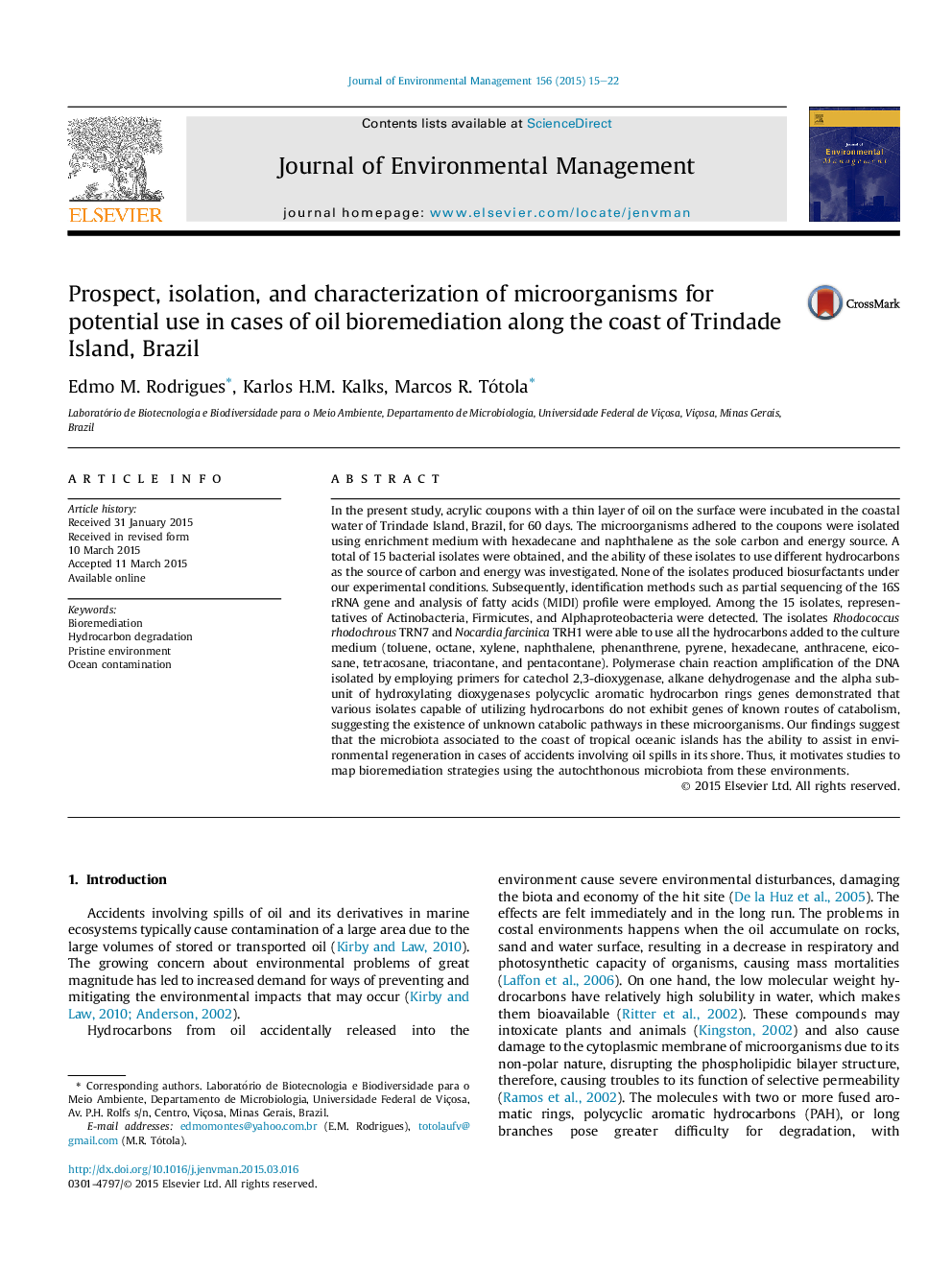| Article ID | Journal | Published Year | Pages | File Type |
|---|---|---|---|---|
| 7482163 | Journal of Environmental Management | 2015 | 8 Pages |
Abstract
In the present study, acrylic coupons with a thin layer of oil on the surface were incubated in the coastal water of Trindade Island, Brazil, for 60 days. The microorganisms adhered to the coupons were isolated using enrichment medium with hexadecane and naphthalene as the sole carbon and energy source. A total of 15 bacterial isolates were obtained, and the ability of these isolates to use different hydrocarbons as the source of carbon and energy was investigated. None of the isolates produced biosurfactants under our experimental conditions. Subsequently, identification methods such as partial sequencing of the 16S rRNA gene and analysis of fatty acids (MIDI) profile were employed. Among the 15 isolates, representatives of Actinobacteria, Firmicutes, and Alphaproteobacteria were detected. The isolates Rhodococcus rhodochrous TRN7 and Nocardia farcinica TRH1 were able to use all the hydrocarbons added to the culture medium (toluene, octane, xylene, naphthalene, phenanthrene, pyrene, hexadecane, anthracene, eicosane, tetracosane, triacontane, and pentacontane). Polymerase chain reaction amplification of the DNA isolated by employing primers for catechol 2,3-dioxygenase, alkane dehydrogenase and the alpha subunit of hydroxylating dioxygenases polycyclic aromatic hydrocarbon rings genes demonstrated that various isolates capable of utilizing hydrocarbons do not exhibit genes of known routes of catabolism, suggesting the existence of unknown catabolic pathways in these microorganisms. Our findings suggest that the microbiota associated to the coast of tropical oceanic islands has the ability to assist in environmental regeneration in cases of accidents involving oil spills in its shore. Thus, it motivates studies to map bioremediation strategies using the autochthonous microbiota from these environments.
Related Topics
Physical Sciences and Engineering
Energy
Renewable Energy, Sustainability and the Environment
Authors
Edmo M. Rodrigues, Karlos H.M. Kalks, Marcos R. Tótola,
